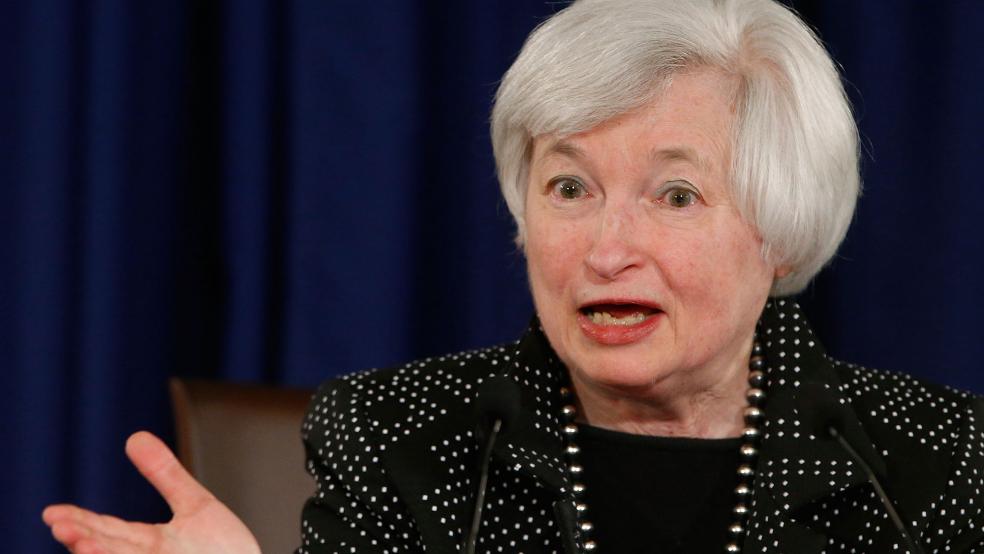The Federal Reserve’s policymakers left interest rates unchanged on Wednesday, as widely expected. In the process, they left most economists and market watchers singing the same song: “See You in September.” That tune could change before too long, though, as the Fed plans the first rate hike since 2006.
In a policy statement issued after their two-day meeting, the members of the rate-setting Federal Open Market Committee said that the economy has been “expanding moderately” after a rough first quarter, but they signaled that they would wait to raise rates until they have seen further improvement in the labor market and are more confident that inflation is rising toward their 2 percent target rate.
Related: We Just Went Through the Worst Month Since the Great Recession
At the same time, the FOMC members’ median projection for where interest rates would be at year-end stayed unchanged, at 0.625 percent, implying two quarter-point rate hikes before 2016, potentially in September and December. “As Fed officials left their interest rate projections for this year unchanged, it appears that the FOMC is still on course for a September lift-off,” Paul Ashworth, chief U.S. economist at Capital Economics, wrote in a research note Wednesday afternoon.
Those “dot plot” projections show that most officials still expect at least one rate increase of 25 basis points, or a quarter of a percentage point, at some point this year, but they also demonstrate some stark differences in expectations. “Officials appear almost equally split between one, two or three 25 basis point rate hikes this year,” Ashworth noted.
The choice will, of course, rest on the FOMC members’ views of the economy and the potential risks and rewards of raising rates at a given point in time. On that front, some changes in the FOMC members’ “dot plot” projections of interest rates stood out. Seven of the 17 officials now expect to hike rates once this year at most, up from three officials as of March.
“The first and easiest interpretation is that whoever changed their views now sees liftoff in December instead of September,” J.P. Morgan economist Michael Feroli wrote to clients. “A second interpretation is that those participants continue to see liftoff in September, but see a long pause thereafter as the economy digests the first rate hike in almost a decade. The third interpretation is that those participants have shifted back the expected timing of liftoff from September to October.”
Feroli said he now sees close to even odds that the liftoff will happen after September.
Related: Why So Many Americans Are Trapped in ‘Deep Poverty’
More important than when exactly the Fed initiates its rate hikes may be how quickly it moves to keep raising rates once that first move is made. The FOMC officials’ interest rate projections for the end of 2016 and 2017 were both lowered by 25 basis points, with the median expectation now for rates to hit 1.75 percent by the end of 2016 and 2.875 by the end of 2017. That strongly suggests that the path the Fed takes to bring rates back up to their historic norms will be even slower than the gradual approach previously indicated.
Fed Chair Janet Yellen reinforced that emphasis at her post-meeting press conference. “I want to emphasize sometimes too much attention is placed on the timing of the first increase,” she said. “What should matter to market participants is the entire trajectory of expected policy.”
Liftoff may be near, but rates won’t be rocketing higher after it happens.
Top Reads from The Fiscal Times:



